The year 2020 will be remembered as a pivotal shift – to life online.
I’ve felt it – trying to get my son into his school’s online class while the toast is burning and I’m trying to run a marketing strategy session on Zoom.
“You’re on mute, Jeff!”
We’re working online, communicating online, and – more than ever – shopping online.
Amid this struggle, it’s our job as ecommerce marketers to make that last process – shopping online – as painless as possible.
Even… enjoyable?
That’s a big ask, but one thing is for sure. The closer we get to understanding exactly what the customer wants right now makes them happy.
Really happy.
“I’ll become your lifelong customer” happy.
And I’m about to share that the ecommerce site that gets this right will dominate your category for years to come.
Make sure that’s you.
Unprecedented Growth = Unprecedented Expectations
What an incredible responsibility (and opportunity) we have. Ecommerce is growing 5x faster than projected this year, a blistering 77%.
And the profile of who is buying from your website has changed, too, offering an opportunity to win market share from competitors. Now, these shoppers are more likely to be:
- Newcomers to your category: 74% of shoppers are buying items they “usually would not buy online.”
- Older: of the 7.4 million people who will go through their first online checkout ever this year (U.S. alone!), 75% are baby boomer-aged or above.
- Unusually willing to be won over: 80% said they would “be more likely to return to an online shop repeatedly if they customized every shopping experience to my personal needs.”
These new shoppers are looking more for necessities than for discretionary spending. Their top complaint with shopping experience is “items out of stock” (76%), and second biggest complaint is “difficulty finding the item I need” (43%)
In other words, they are mostly tech-unsavvy online shopper newbies expect a shopping experience that is fast, uncomplicated, and above all relevant to their immediate needs.
And they’ll dedicate their dollars to the first shop they find that does that for them.
So the stakes couldn’t be higher. Get personalization right on their first visit today, and you’ll lead your company into decades of growth. Don’t, and it will be your competitors you read about in 20 years when you look back at this historic year of ecommerce adoption.
First in Personalization = Dominate the Category
Jeff Bezos is the richest person in the world because he got personalization in ecommerce earlier – and better – than anyone else. In 1998:
“In the online world, businesses have the opportunity to develop very deep relationships with customers, both through accepting preferences of customers and then observing their purchase behavior over time, so that you can get that individualized knowledge of the customer and use that individualized knowledge of the customer to accelerate their discovery process.
If we can do that, then the customers are going to feel a deep loyalty to us, because we know them so well.”
In the last 22 years, most ecommerce companies have gotten pretty good at personalization when they have lots of data about the shopper.
But as I’ll share below, the one thing 78% of ecommerce stores are not getting right yet is “first-touch personalization” – a new, technically challenging but possible offering that will make or break the winner of every category in 2020 and beyond.
“[T]he one thing 78% of ecommerce stores are not getting right yet is “first-touch personalization” – a new, technically challenging but possible offering that will make or break the winner of every category in 2020 and beyond.”
First-Touch Personalization: Why It Dominates
When the shopper is new and arriving from a search, we only have one point to personalize around: the search term.
And shoppers expect us – no, need us – to solve the problem as they described it: in the form of that search term.
This “first-touch personalization” is easy to do in a physical shop. I need shampoo, and I have very specific needs. (I’m an oily, wavy hair, salt-and-peppery kind of guy.)
I go to the Body Shop and tell them, “Hey, I’m looking for a good shampoo.” They look at my hair, ask me a couple of questions, take me to the right section, and point to the part of the shelf that most likely contains the shampoo meeting my particular criteria.
So let’s summarize what a shopgoer like you or me wants when we walk in a store:
- A store with products in stock that solve our problem.
- Knowledgeable staff who can direct us to the section of the store with only those products.
- A pleasant buying experience.
This is all simple to achieve in a physical store with real people running it.
But now, shoppers are moving online in droves. Physical retail is dying. Malls are closing. Staff are getting laid off.
So the onerous task of providing that first-touch personalization in the shopping experience falls to landing pages on your website. And they only have one point of data to personalize around – a search term.
What First-Touch Personalization Looks Like for Ecommerce
Here are a couple of examples of the difference between the traditional way ecommerce teams tried to convert shoppers from search – vs. adding first-touch personalization.
The first is for Adore Beauty, an online cosmetics that does about $100 million in revenue per year.
Adding first-touch personalization for Adore Beauty:
- Increased shopper conversion rate by 98%.
- Reduced customer acquisition cost (CAC) by 64%.
- Increased return on advertising spend (ROAS) by 169%.
(Here’s the full case study.)
The concepts behind these results are well known, as studies have proven the average conversion rate increase for pages satisfying these two shopper expectations is 108% and CAC reduction is 48%.
The improvements make sense when you look at the before and after customer experience for one customer need, “eyelash serum for growth.”
“Before” first-touch personalization, the landing page has only one product. Shoppers dislike this landing page experience when they’re searching, because they want to see multiple options that solve their problem – then compare, select, and buy.
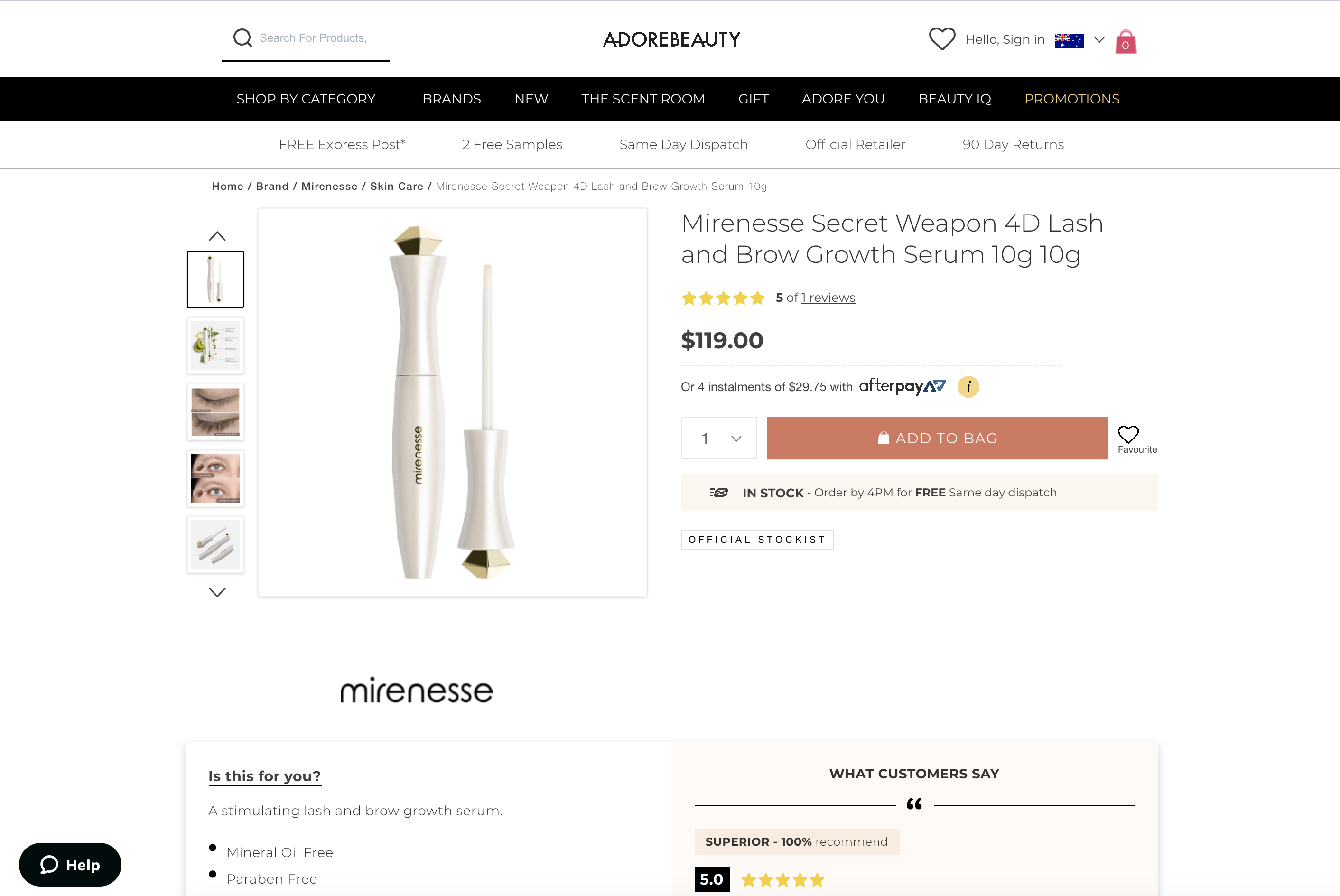
Regardless of what goes on below the page fold, to a shopper, this page contains only that product. A full 75% of shoppers will never scroll down a page that has only one product above the fold.
But, having more than one product above the fold makes them scroll and stay:
- Makes them scroll: 116% more likely to scroll down the page
- Makes them stay: 88% more likely to visit more than one page on your site
Here’s the “after” first-touch personalization experience for an Adore Beauty shopper looking for “eyelash serum for growth.” This properly recreates the experience a shopper wants when they walk in the store:
- They see many options (7 products) matching their need.
- The options are ranked by how well they match the need.
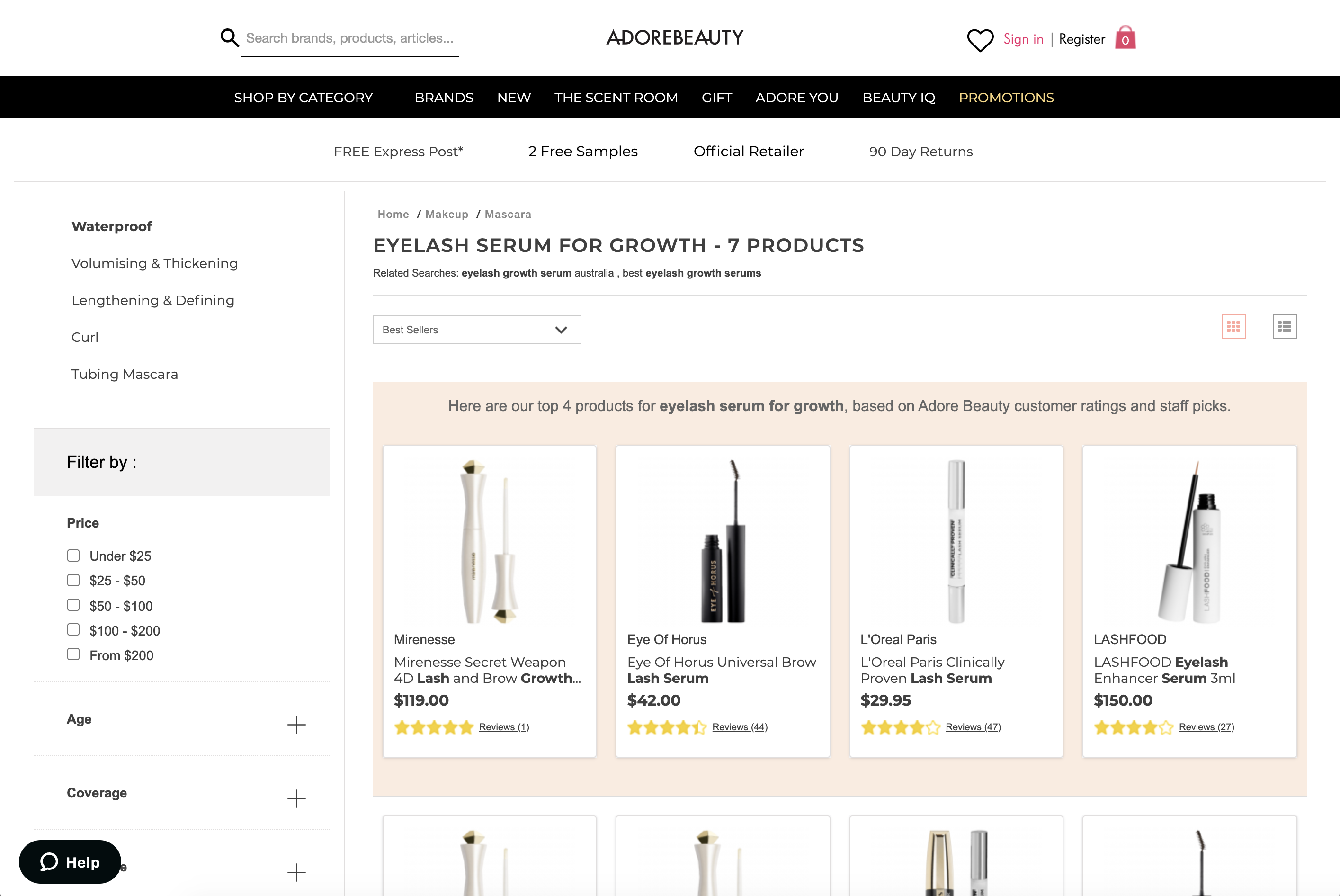
The revenue returns for brands that move to first-touch personalization are extraordinary, too. On average, internal data from our clients shows they increase their average new customer revenue from organic search by 63%.
Take Kogan.com, an online retailer that does $500 million a year. Tens of thousands of their new customers started their lifetime of buying on a Longtail UX page, generating:
- More than $10 million in revenue from new shoppers per year.
- 105% year-on-year growth from Longtail UX as a channel.
The “before” first-touch experience for a shopper with a need for a “mini displayport to hdmi female adapter” – only one buying option presented:
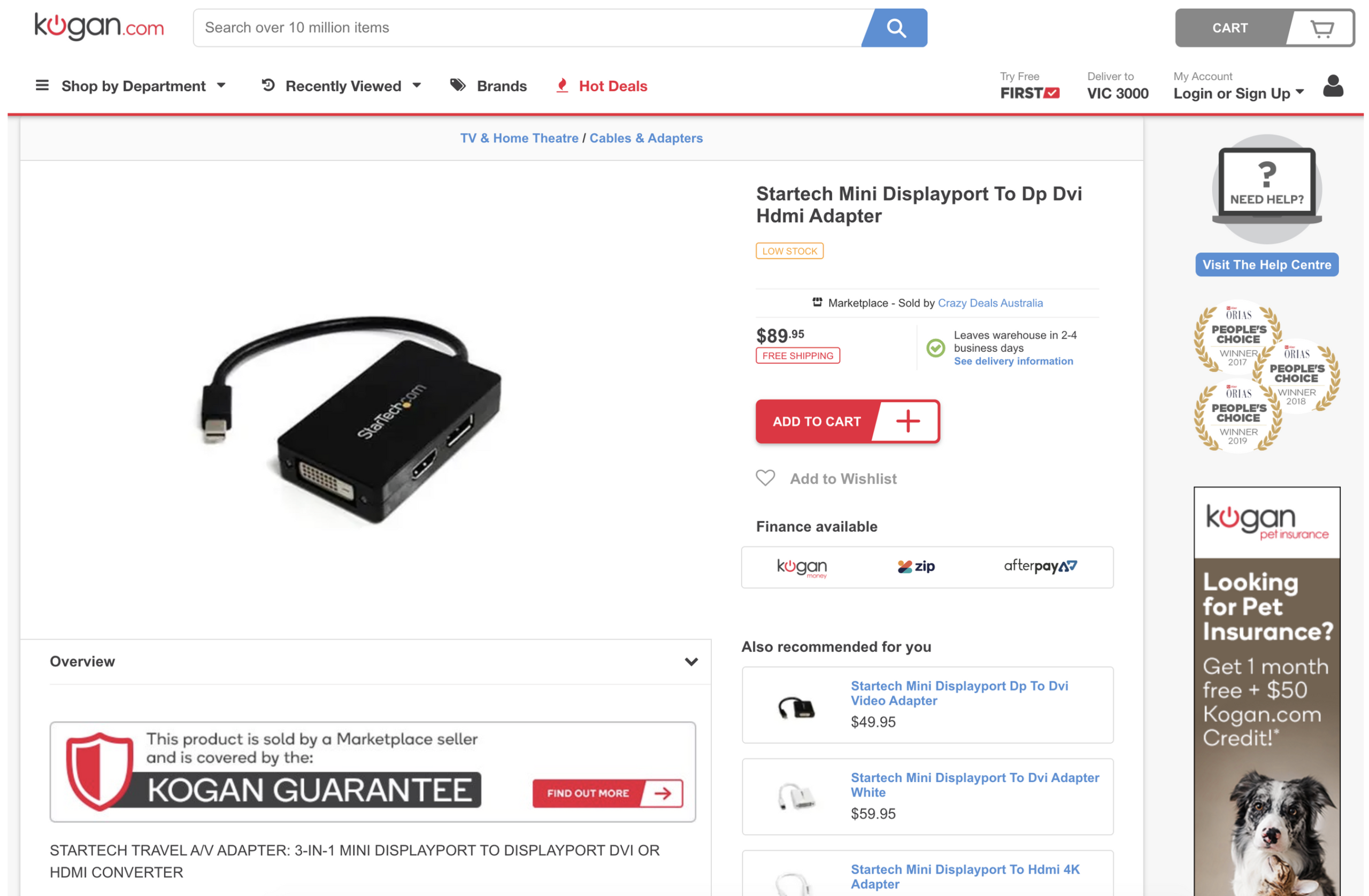
The “after,” providing more than 20 buying options varied by type, hertz, voltage, length, color, and more:
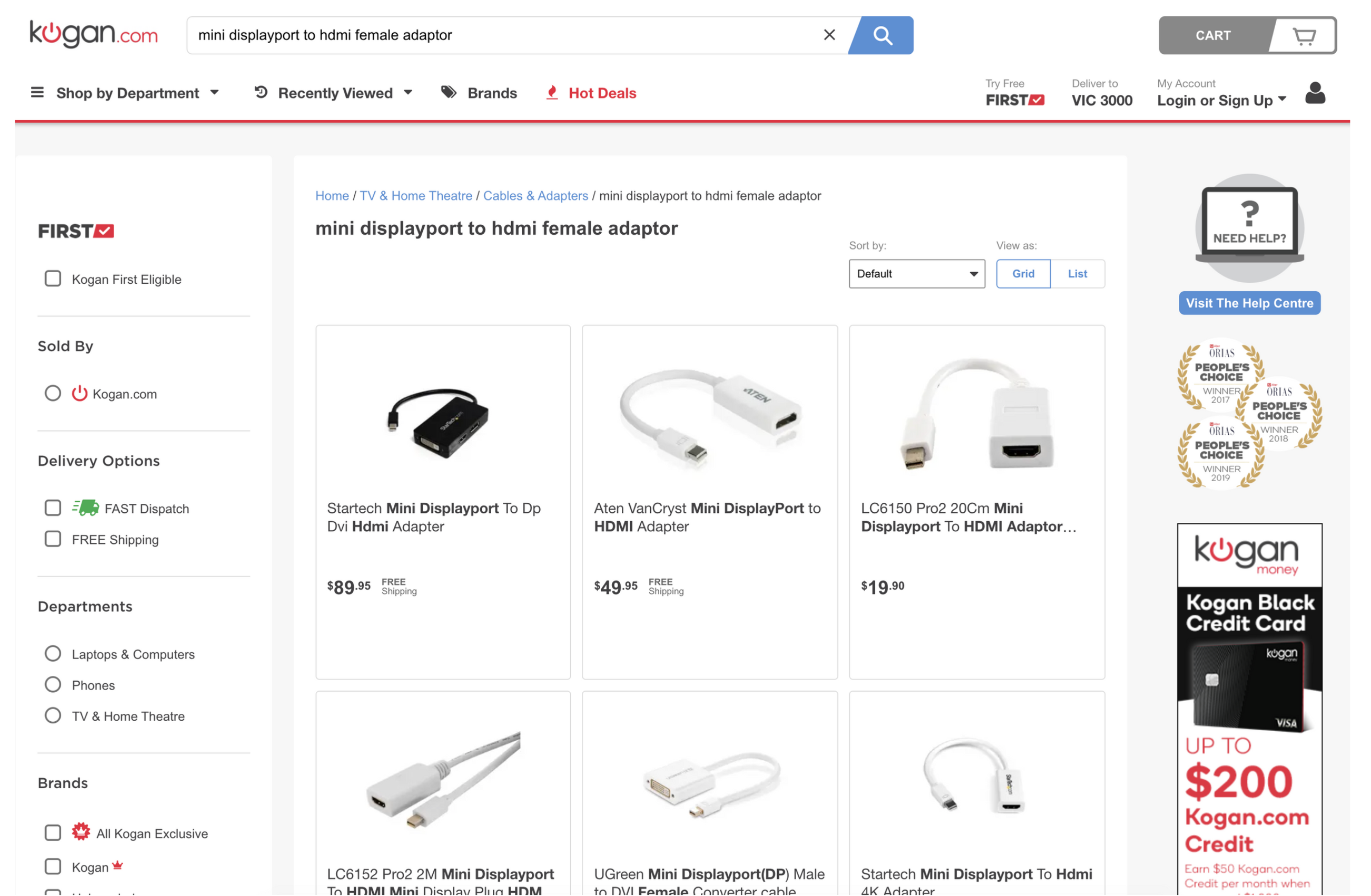
(Here’s the full case study.)
The digital transformation looks simple, but there is complex machine learning matching going on behind the scenes.
To find out how much more revenue your ecommerce site would get, how much you can reduce customer acquisition cost, and what categories you can easily take on, run our free Scorecard tool here.
Unprecedented Results for Google Shopping With First-Touch Personalization
Considering Google Shopping Ads is 76% of the average search marketing budget, you would think all ecommerce sites would already be providing multiple options matching a shopper’s needs when they land.
They’re not.
A review of the top 100 ecommerce spenders shows that only 22% of them are providing all three first-touch personalization advantages:
- Multiple products on the page.
- All matching the customer’s immediate need.
- At least 4 products visible above the page fold.
The rest are either showing unrelated products, putting the products below the fold, or showing none at all.
Some notable examples providing the lowest-rated first-touch shopping experience include Walmart and Home Depot, as well as major stores with recent bankruptcies:
- GNC
- Neiman Marcus
- The Paper Store
Their landing pages all provide the worst possible experience – costing them double the customer acquisition cost of ecommerce brands that do this right.
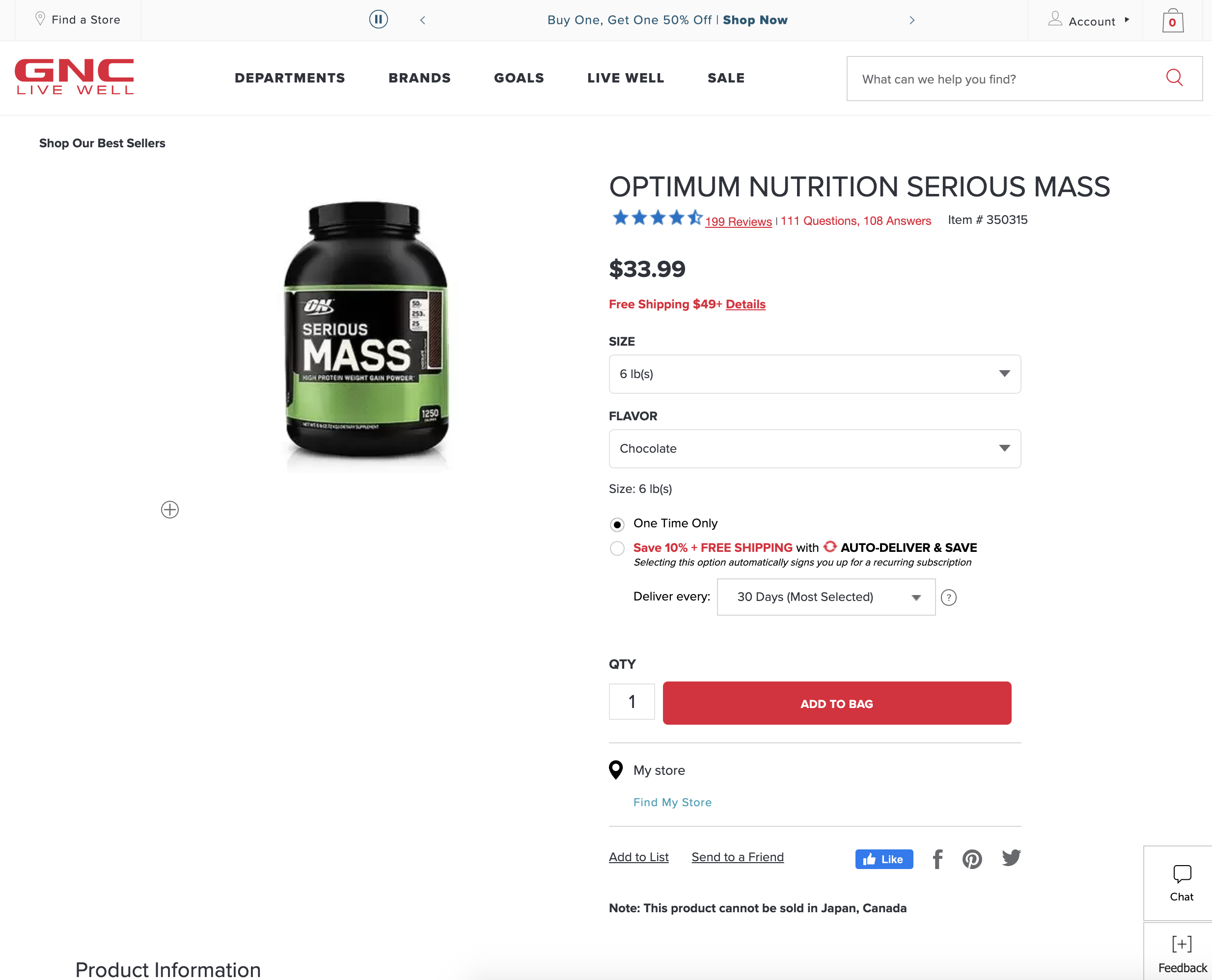 |
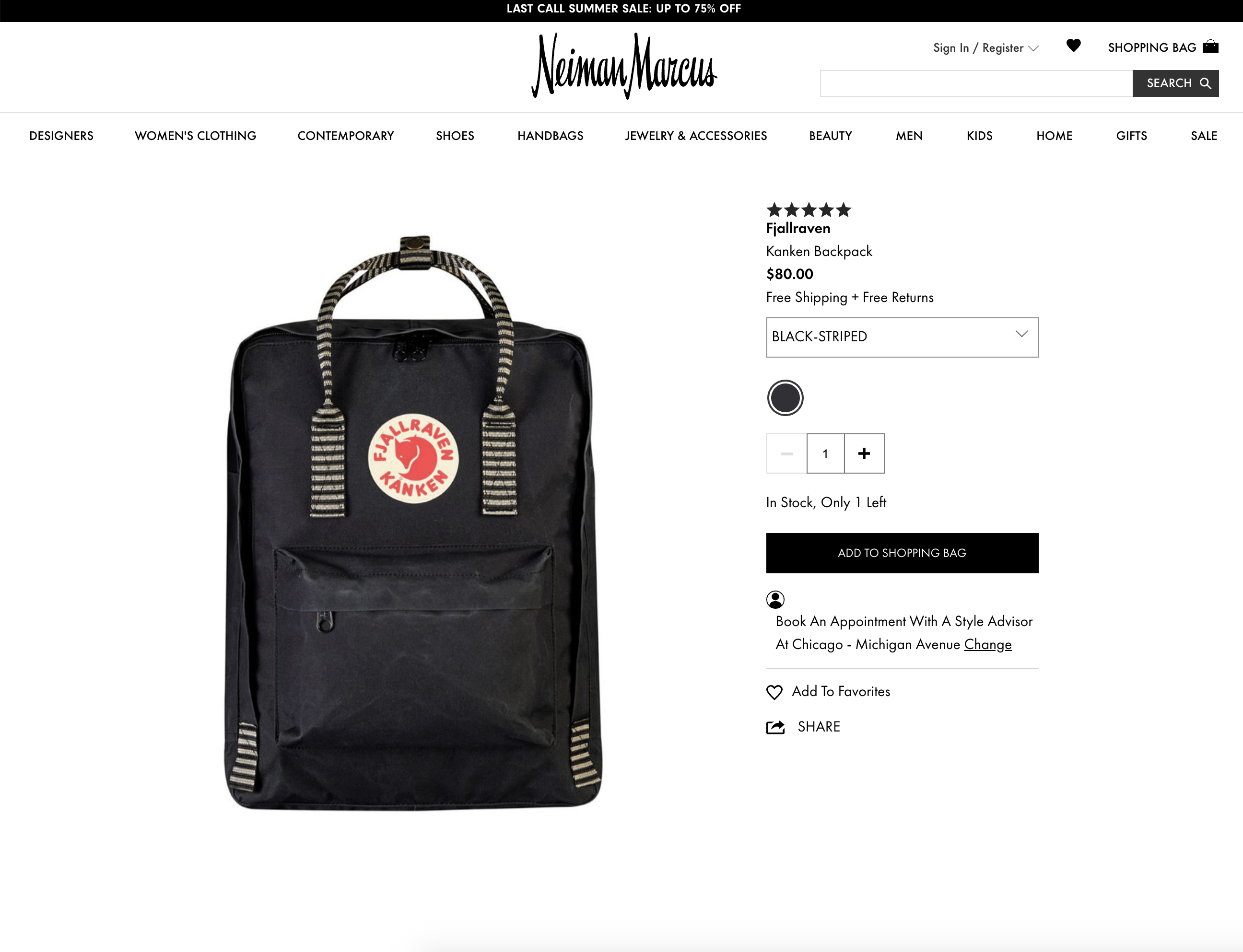 |
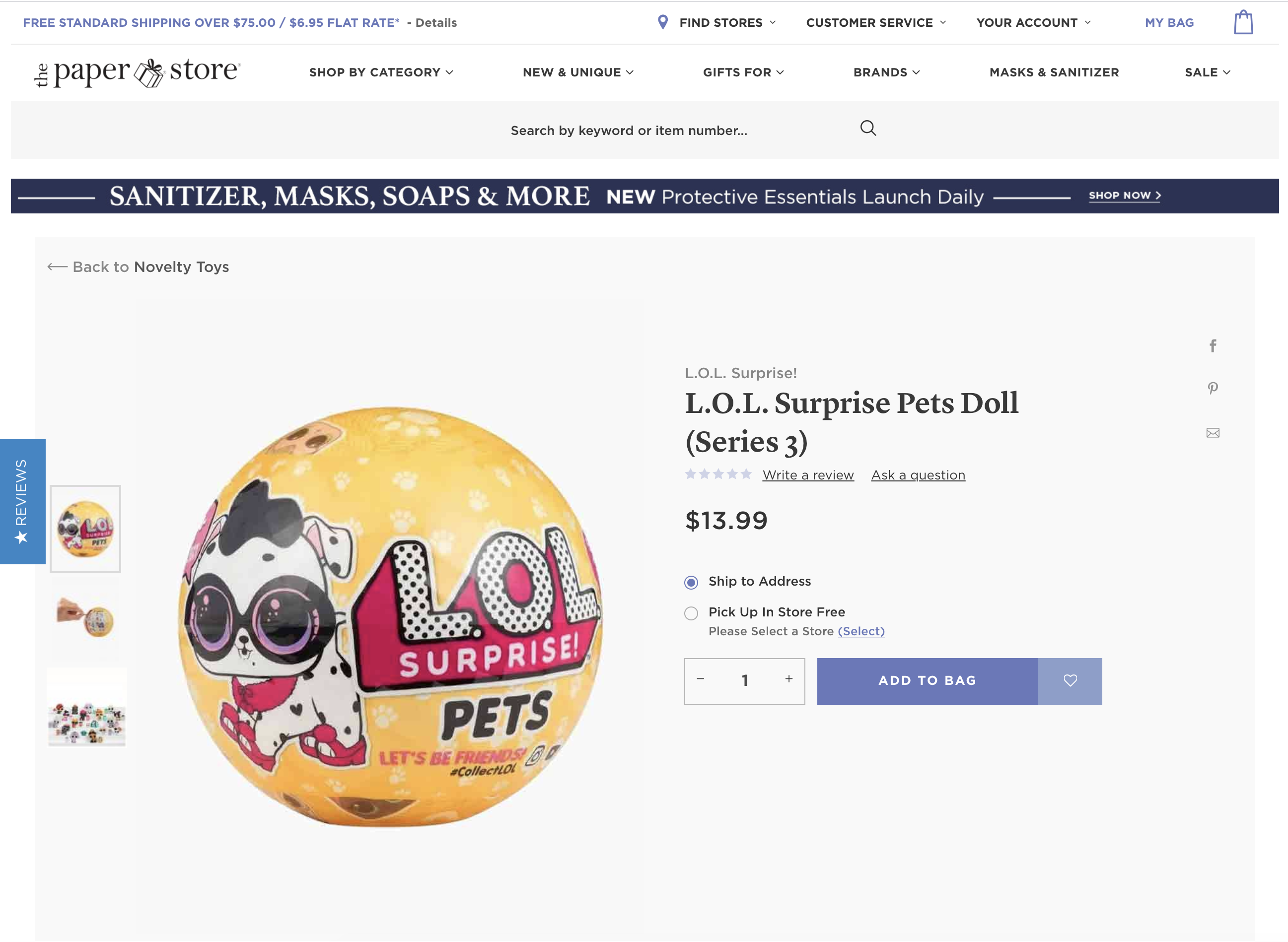 |
|
| Brand | GNC | Neiman Marcus | The Paper Store |
| Customer need | vegan protein | fjallraven kanken | lol surprise pets |
| Number of similar products above the fold | 1 | 1 | 1 |
This means 48% of spend on Google Shopping Ads is wasted on most ecommerce sites industry-wide; it’s a huge opportunity for an up-and-coming contender in any category to compete – and win against brands that aren’t getting this right yet.
Some internal results from our own clients confirm that first-touch personalization can make an emerging brand a force to be reckoned with in any category.
Outbax Camping, an emerging brand in the outdoor recreation space, dominates in categories against bigger brands like Decathlon and UGG with first-touch personalization, improving:
- Return on advertising spend (ROAS): Over 500%.
- Conversion rate: Over 300%.
- Average basket value: Over 90%.
- Bounce rate: Reduced by 50%.
The digital transformation looks simple, but complex matching algorithms are behind the products offered on the page.
The “before” – one buying option for the customer’s need (“lithium power station”):
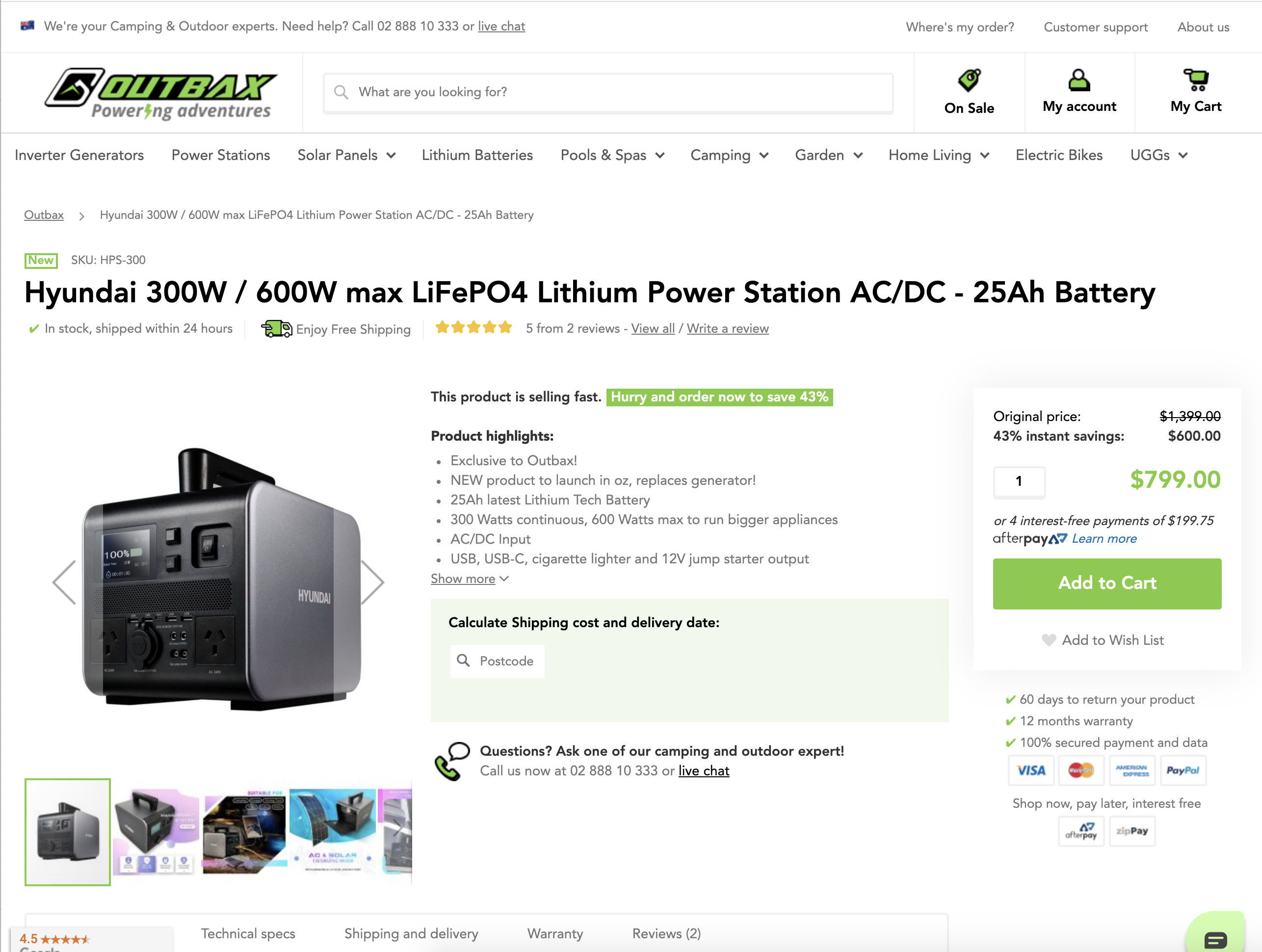
The “after” – 5 buying options ordered by relevance to the customer need:
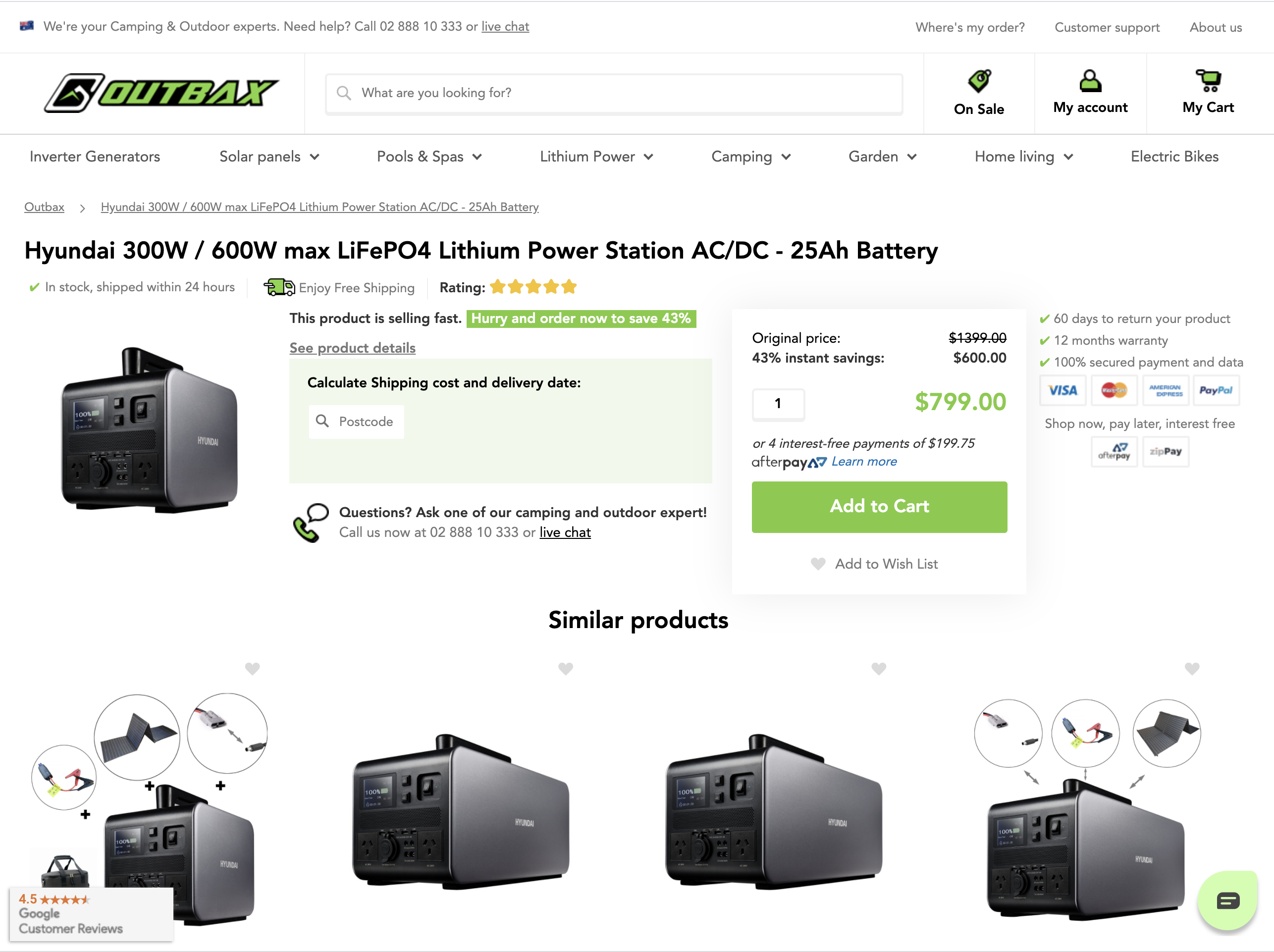
AMF Magnets, an emerging custom magnets vendor, is another example of a growing ecommerce store punching above its weight, beating Zazzle and Vistaprint in experience, and doubling their add to cart rate.
Their shopping experience “before” first-touch personalization, with only buying option to meet the buyer’s need (“red whiteboard clip”):
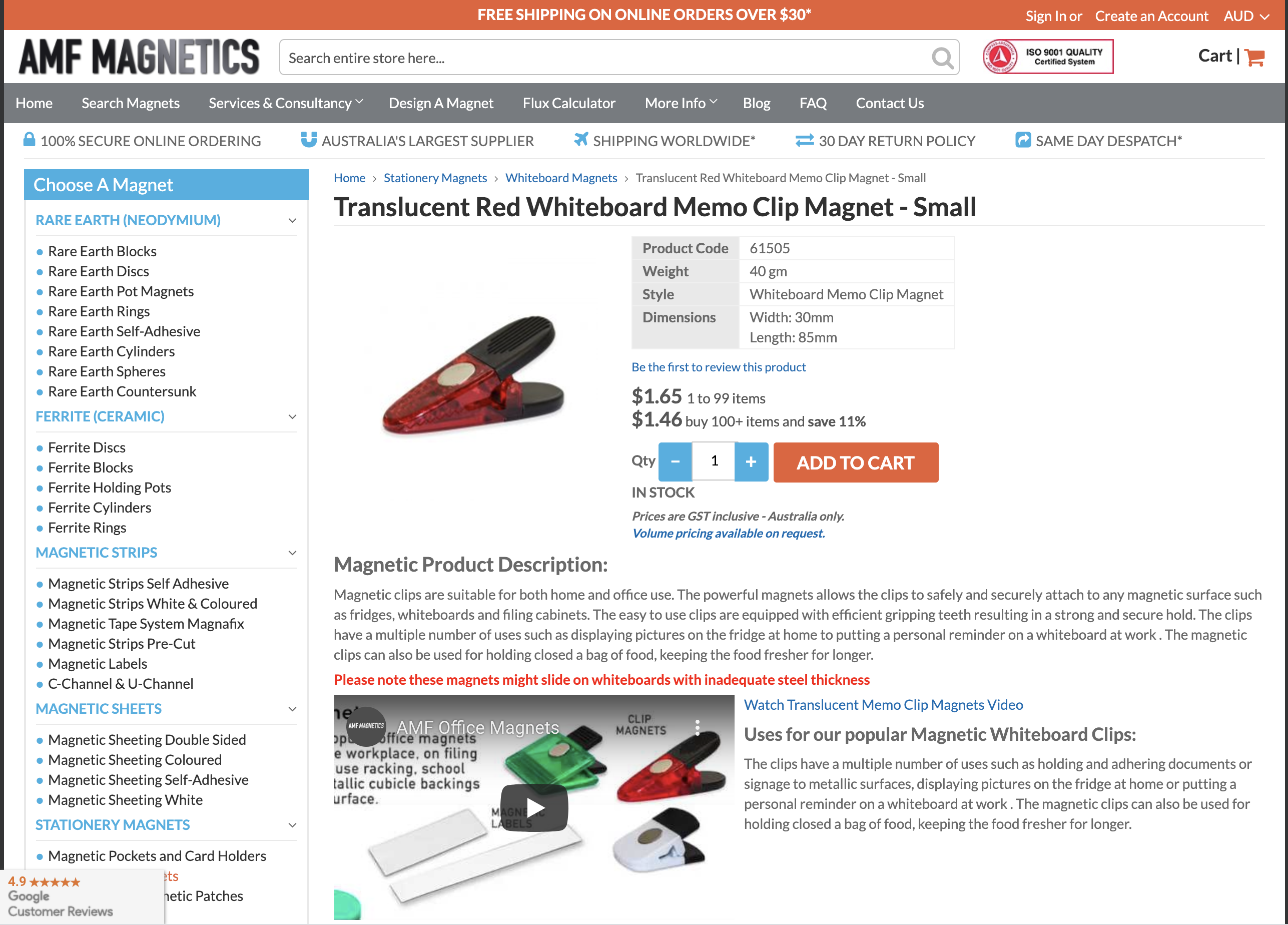
And “after,” with four buying options ordered by relevance to the customer need:
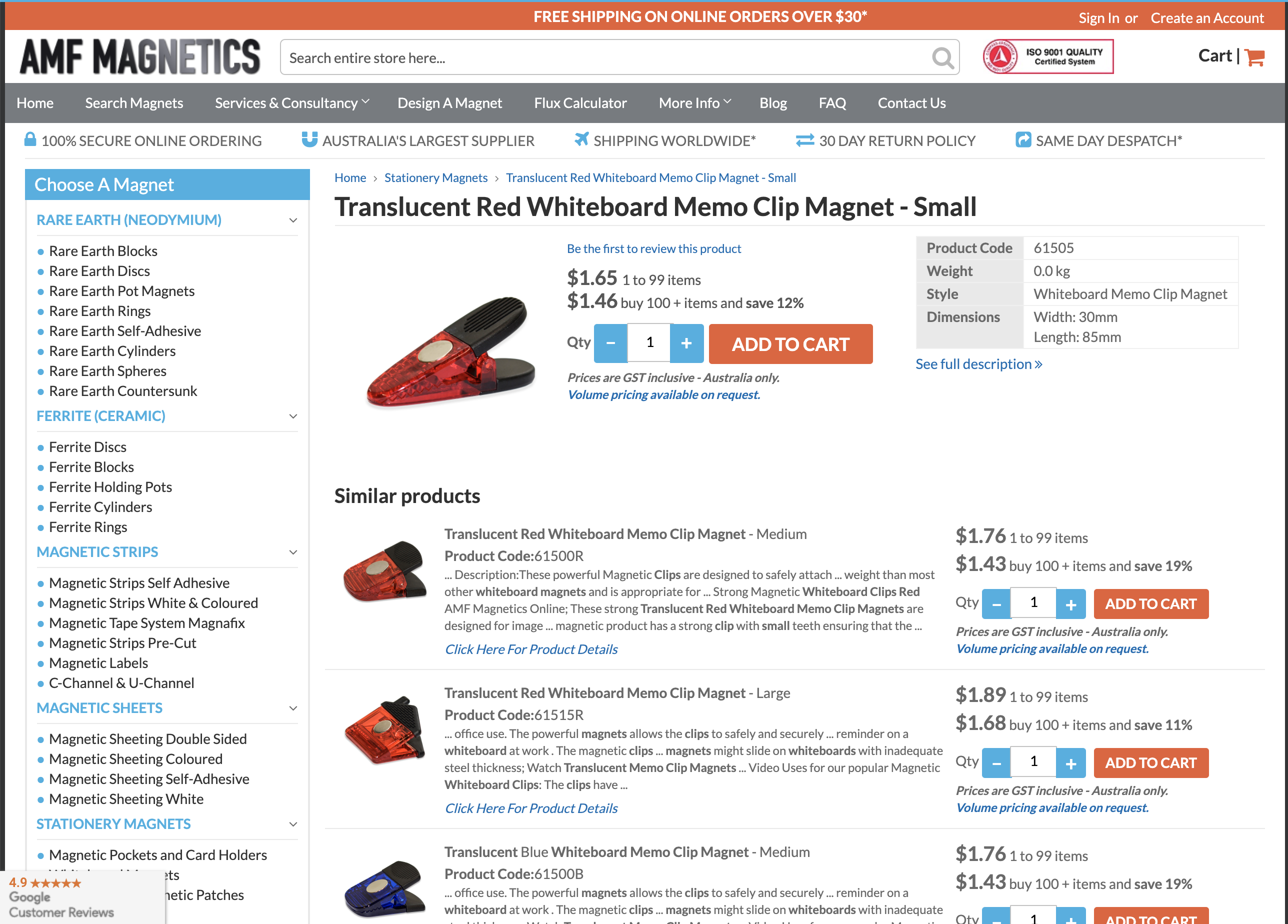
To find out which categories, and much more market share your brand could be owning, we built a free Scorecard tool you can run here.
Go run it now to see what ecommerce categories you could dominate, the revenue you could generate, and acquisition costs you could save while doing it.
Getting Internal Buy-In on First-Touch Personalization
There’s now no room for doubt – online customers expect personalization from the first touch.
Brands that don’t go all-in on digital transformation will not make it through the 2020s, and CEOs are getting that message.
Recently, 67% of Global 2000 CEOs polled said they put digital transformation at the center of their corporate strategy, and 35% of IT resources are already spent on creating new digital revenue streams.
The data is here – the case is clear.
Now is the time to adopt new tech that can make giant leaps without putting a strain on the internal tech stack – which is why we are now only offering Longtail UX as a fully outsourced bolt-on platform we run for our clients.
Talk to us about how to implement first-touch personalization, increase your online market share, and dramatically reduce your customer acquisition costs.
See the ecommerce categories you could dominate and additional revenue you could earn
The opinions expressed in this article are the sponsor's own.



